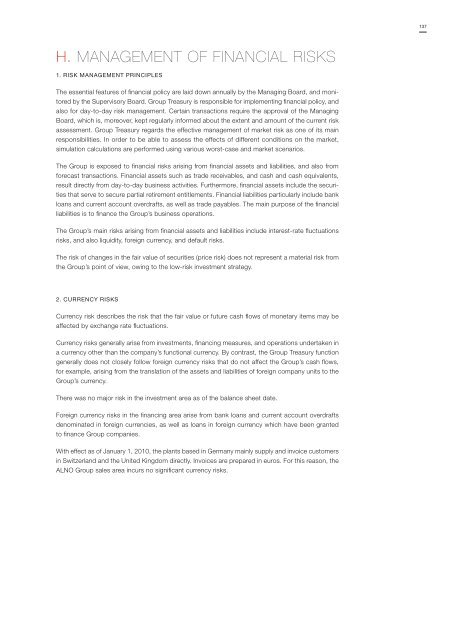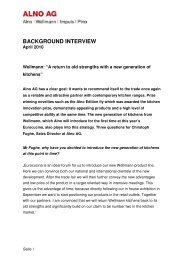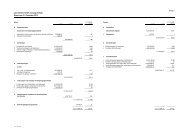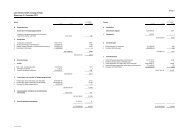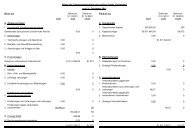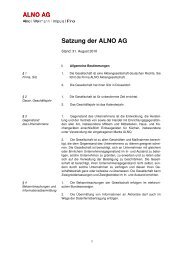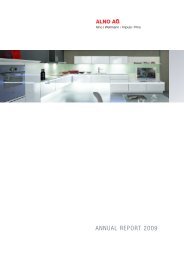100 % FUTURE - ALNO
100 % FUTURE - ALNO
100 % FUTURE - ALNO
You also want an ePaper? Increase the reach of your titles
YUMPU automatically turns print PDFs into web optimized ePapers that Google loves.
137<br />
H. MANAGEMENT OF FINANCIAL RISKS<br />
1. RISK MANAGEMENT PRINCIPLES<br />
The essential features of financial policy are laid down annually by the Managing Board, and monitored<br />
by the Supervisory Board. Group Treasury is responsible for implementing financial policy, and<br />
also for day-to-day risk management. Certain transactions require the approval of the Managing<br />
Board, which is, moreover, kept regularly informed about the extent and amount of the current risk<br />
assessment. Group Treasury regards the effective management of market risk as one of its main<br />
responsibilities. In order to be able to assess the effects of different conditions on the market,<br />
simulation calculations are performed using various worst-case and market scenarios.<br />
The Group is exposed to financial risks arising from financial assets and liabilities, and also from<br />
forecast transactions. Financial assets such as trade receivables, and cash and cash equivalents,<br />
result directly from day-to-day business activities. Furthermore, financial assets include the securities<br />
that serve to secure partial retirement entitlements. Financial liabilities particularly include bank<br />
loans and current account overdrafts, as well as trade payables. The main purpose of the financial<br />
liabilities is to finance the Group’s business operations.<br />
The Group’s main risks arising from financial assets and liabilities include interest-rate fluctuations<br />
risks, and also liquidity, foreign currency, and default risks.<br />
The risk of changes in the fair value of securities (price risk) does not represent a material risk from<br />
the Group’s point of view, owing to the low-risk investment strategy.<br />
2. CURRENCY RISKS<br />
Currency risk describes the risk that the fair value or future cash flows of monetary items may be<br />
affected by exchange rate fluctuations.<br />
Currency risks generally arise from investments, financing measures, and operations undertaken in<br />
a currency other than the company’s functional currency. By contrast, the Group Treasury function<br />
generally does not closely follow foreign currency risks that do not affect the Group’s cash flows,<br />
for example, arising from the translation of the assets and liabilities of foreign company units to the<br />
Group’s currency.<br />
There was no major risk in the investment area as of the balance sheet date.<br />
Foreign currency risks in the financing area arise from bank loans and current account overdrafts<br />
denominated in foreign currencies, as well as loans in foreign currency which have been granted<br />
to finance Group companies.<br />
With effect as of January 1, 2010, the plants based in Germany mainly supply and invoice customers<br />
in Switzerland and the United Kingdom directly. Invoices are prepared in euros. For this reason, the<br />
<strong>ALNO</strong> Group sales area incurs no significant currency risks.


